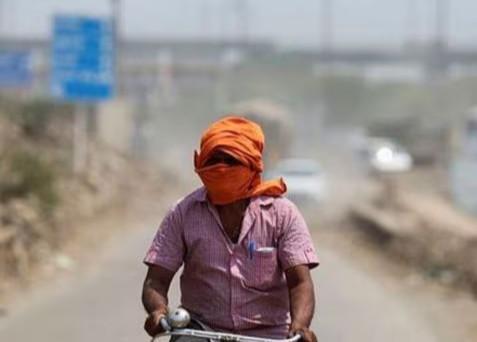
Extreme Heat Endangering Health & Productivity of Workers: Report
As the world grapples with the increasing threat of climate change, a recent report by the World Health Organisation (WHO) and World Meteorological Organisation (WMO) has sounded the alarm on the devastating impact of extreme heat on the health and productivity of workers worldwide.
According to the report, worker productivity drops by 2-3% for every degree above 20°C, making extreme heat a significant threat to global economic growth and development. The vulnerable populations, including children, elderly, and manual workers in agriculture and construction sectors, are particularly at risk.
Heatstroke, dehydration, and kidney dysfunction are just a few of the severe health risks associated with extreme heat. The report highlights that the health consequences of heat stress can be long-term, leading to permanent damage and even death.
The report cites examples of countries that have already seen significant declines in productivity due to extreme heat. For instance, a study in Australia found that heat stress reduced worker productivity by 2.4% per degree above 24°C. Similarly, a study in the United States found that heat stress reduced worker productivity by 3.2% per degree above 28°C.
The agriculture sector is particularly vulnerable to the impacts of extreme heat. Farmers and agricultural workers are often exposed to high temperatures for extended periods, making them more susceptible to heat-related illnesses. The report notes that climate change is projected to increase temperatures by 1.5°C to 2°C by 2050, which will further exacerbate the problem.
The construction sector is another area where workers are at risk. Manual workers in the construction sector are often exposed to extreme heat while working outdoors, making them more prone to heat-related illnesses. The report notes that heat stress can lead to decreased productivity, increased absenteeism, and even worker fatalities.
The elderly and children are also vulnerable to the impacts of extreme heat. The report notes that the elderly are more susceptible to heat stress due to age-related changes in the body, such as decreased sweating and reduced ability to regulate body temperature. Children, on the other hand, are more susceptible to heat stress due to their smaller body size and limited ability to regulate their body temperature.
Developing countries are particularly vulnerable to the impacts of extreme heat. The report notes that many developing countries lack the infrastructure and resources to protect workers from extreme heat. In these countries, workers may not have access to adequate cooling systems, ventilation, or hydration facilities, making them more susceptible to heat-related illnesses.
The report highlights the need for governments, employers, and workers to take immediate action to address the impacts of extreme heat on worker health and productivity. Some of the recommended measures include:
- Implementing heat stress prevention and control measures, such as providing shaded areas, cooling systems, and hydration facilities
- Encouraging workers to take regular breaks and stay hydrated
- Providing training and education on heat stress prevention and control
- Implementing flexible work arrangements, such as adjusting work schedules or allowing workers to work from home during extreme heat events
In conclusion, the report by the WHO and WMO highlights the devastating impact of extreme heat on worker health and productivity. It is imperative that governments, employers, and workers take immediate action to address this issue and protect the most vulnerable populations. By taking proactive measures to prevent and control heat stress, we can ensure a safer and more productive workforce for generations to come.
Source: https://repository.inshorts.com/articles/en/PTI/45d9bd2d-ff57-417c-9e5f-831344bb34b0






